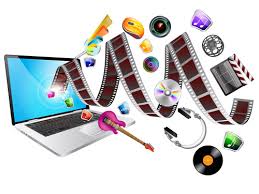The Power of Multimedia in Modern Communication
In today’s digital age, multimedia plays a vital role in how we communicate, learn, and engage with the world around us. Multimedia, a combination of various forms of content such as text, images, audio, video, and animations, has revolutionized the way information is presented and consumed.
One of the key strengths of multimedia is its ability to convey complex ideas and emotions in a compelling and engaging manner. Through the use of visuals, sound, and interactive elements, multimedia captures the audience’s attention and enhances their understanding of the message being communicated.
From social media posts to online news articles to educational videos, multimedia has become ubiquitous in our daily lives. It enables us to share experiences, tell stories, and express creativity in ways that were not possible before.
Businesses leverage multimedia to market their products and services effectively. Eye-catching graphics, captivating videos, and interactive presentations help companies connect with their target audience on a deeper level and drive engagement.
Education has also been transformed by multimedia. Interactive e-learning platforms, virtual reality simulations, and educational games enrich the learning experience and cater to different learning styles. Students can now access a wealth of knowledge through multimedia resources that make learning more engaging and interactive.
As technology continues to advance, the possibilities for multimedia are endless. Virtual reality experiences, augmented reality applications, live streaming services – these are just a few examples of how multimedia is shaping the future of communication.
In conclusion, multimedia has become an integral part of modern communication strategies across various industries. Its ability to engage audiences, convey information effectively, and foster creativity makes it a powerful tool for expression and connection in today’s digital world.
Frequently Asked Questions About Multimedia Explained
- What do you mean by multimedia terms?
- What is multimedia in your own words?
- What is multimedia and examples?
- What are the five 5 types of multimedia?
What do you mean by multimedia terms?
Multimedia terms refer to the vocabulary and terminology used in the field of multimedia, which encompasses a wide range of digital content types such as text, graphics, audio, video, and animations. Understanding multimedia terms is essential for effectively creating, editing, and sharing multimedia content. These terms may include concepts related to file formats, compression techniques, interactive elements, design principles, and technical specifications that are crucial for producing high-quality multimedia presentations. By familiarizing oneself with multimedia terms, individuals can enhance their communication skills and technical proficiency in utilizing various forms of digital media for diverse purposes.
What is multimedia in your own words?
Multimedia, in simple terms, refers to the combination of different types of content such as text, images, audio, video, and animations to convey information or entertain. It is a versatile form of communication that engages multiple senses simultaneously, making the content more dynamic and interactive. By integrating various media elements, multimedia enriches the user experience and allows for a more comprehensive understanding of the message being communicated. Whether it’s a captivating video presentation, an interactive website, or a multimedia art installation, this blend of media forms has become an integral part of our daily lives in the digital age.
What is multimedia and examples?
Multimedia refers to the integration of different forms of content, such as text, images, audio, video, and animations, to create a rich and interactive communication experience. Examples of multimedia include online videos that combine visuals and sound to deliver information or entertainment effectively. Interactive websites that feature images, text, and audio elements to engage users are also considered multimedia. Educational presentations that incorporate slideshows, videos, and interactive quizzes to enhance learning are another common example of multimedia applications. In essence, multimedia encompasses a wide range of digital content that leverages various media formats to convey messages and engage audiences in dynamic ways.
What are the five 5 types of multimedia?
Multimedia encompasses a diverse range of content types that combine text, images, audio, video, and animations to create engaging and interactive experiences. The five main types of multimedia include text, which forms the foundation for conveying information; images, which visually enhance communication; audio, which adds sound and music to enrich the experience; video, which brings motion and visual storytelling to life; and animations, which provide dynamic and interactive elements to engage the audience. Each type of multimedia serves a unique purpose in delivering information and entertainment across various platforms and mediums.

